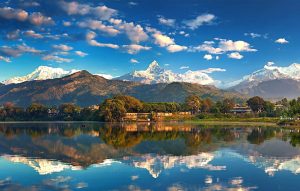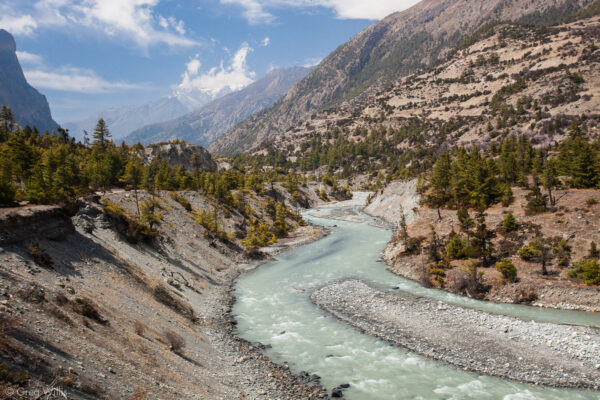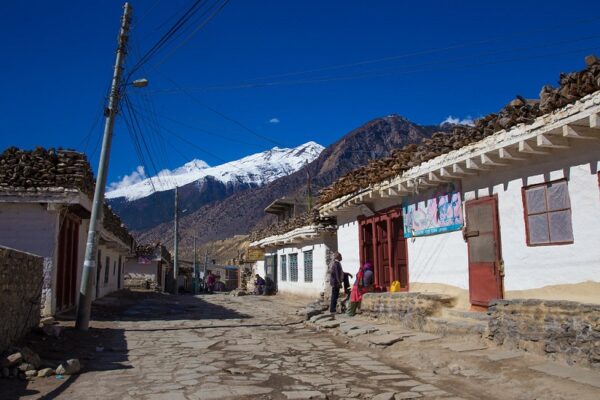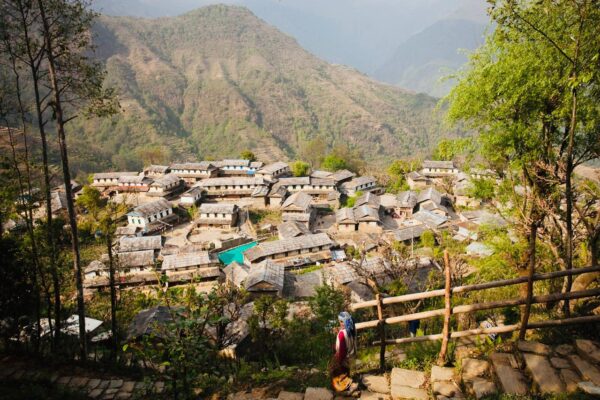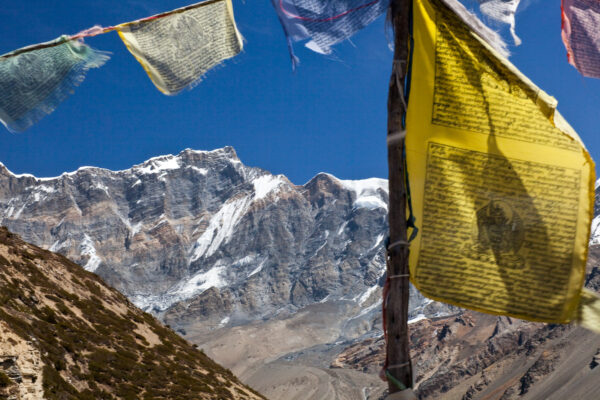
-
trip code
TGN-311
- difficulty
Strenuous
-
Trip Style
Group
-
Start in
Kathmandu
-
end in
Kathmandu
-
group size
2 - 14 Pax
-
max altitude
4,010 (13,157 feet) Lo La Pass
-
Accommodation
Tea House
-
Best Season
September and ends of November, March to May.
Overview
Table of Contents
ToggleUpper Mustang Trek: Explore the Lost Hidden Kingdom in Nepal
The district of Mustang was once an independent kingdom. Until the early 1950s, it maintained close cultural ties with Tibet. The people here remained isolated from Nepal for hundreds of years. Even today, the true mountain folks of the Upper Mustang Trek still speak Tibetan and preserve their heritage. Explore this lost hidden kingdom on the Upper Mustang Trek.
History of Mustang Kingdom and Royal Rule
The king of Mustang held titular kingship until 2008, when Nepal became a republic following a major political shift. Although the monarchy ended, the king retained his title. Similarly, petty kings in Bajhang, Salyan, and Jajarkot kept their titles. Mustang’s capital, Lo Manthang, remains home to the last raja of Mustang. To learn more about Nepal’s royal history, visit the Nepal Government Official Site.
Tiji Festival 2025: Cultural Celebrations in Upper Mustang
Every May, Lo-Manthang in Upper Mustang hosts the vibrant Tiji Festival. This major cultural event celebrates Tibetan Buddhism with traditional music, dances, and performances. These acts depict the victory of good over evil. Visitors also enjoy unique activities that showcase native traditions. The festival creates an atmosphere cherished by locals and tourists alike.
Population and Ethnic Groups of Mustang Region
Based on the 2001 census, Mustang had roughly 14,981 residents spread across three larger towns. The district also contains about 30 smaller settlements. The majority of inhabitants belong to the Gurung and Thakali ethnic groups. Some residents proudly claim pure Tibetan ancestry. For information on Nepal’s diverse ethnic communities, check out our page on Ethnic Groups in Nepal.
Geography and Historical Trade Routes of Mustang
Mustang lies on a strategic trade route between India and Tibet. This location supported a thriving population. The trekking route used today follows the same path traders took since the 15th century. Discover other historic trekking routes on our Annapurna Circuit Trek.
Although Mustang became part of Nepal in the 1950s, foreigners only gained access in the early 2000s. Today, access beyond Kagbeni requires special trekking permits. Trekkers must also travel with a government-appointed official.
Discover the Ancient Mustang Sky Caves and Buddhist Artifacts
The Upper Mustang caves, or Sky Caves, are among the area’s most captivating attractions. Hundreds of man-made caves are carved into cliff faces. Experts estimate around 10,000 caves in this region. Exploring these caves revealed numerous Buddhist artifacts, some dating back to the 12th century. Finds include paintings, sculptures, and manuscripts. Along with a 55-panel depiction of Buddha’s life, the Mustang Sky Caves rank among the world’s greatest archaeological mysteries. For more about Buddhist heritage in Nepal, visit the UNESCO World Heritage Site on Lumbini.
Trek Difficulty and Best Seasons for Upper Mustang Trek
The Upper Mustang Trek is not particularly difficult, with its highest point at 3,800 meters. However, the conditions can be harsh. Most residents migrate to lower regions during winter due to cold weather, so trekking during this season is best avoided. Summer and monsoon months provide more favorable conditions.
Trekking Permits and Regulations for Upper Mustang
Permits play a crucial role in visitor safety and conservation. For the Upper Mustang Trek, you need the Upper Mustang Restricted Area Permit and the Annapurna Conservation Area Permit (ACAP). You can obtain these permits in Kathmandu or Pokhara. Trekking with a registered guide or agency is mandatory. Properly acquiring permits supports the local economy and helps protect Mustang’s unique culture and environment. Read more about trekking permits on our Nepal Trekking Permits Guide.
Best Time and Climate for Trekking in Upper Mustang
Upper Mustang lies in the rain shadow region of the Himalayas and receives very little rainfall. The trek usually takes at least 14 days. It features a fairly easy walk through the Kali Gandaki valley, with occasional climbs above the valley walls. Vegetation is sparse in this desert-like region, but the harsh conditions test and strengthen travelers’ grit. The journey becomes part of the experience, especially when braving the cold Mustang winds.
Trip highlights
- Jomsom bazaar- Located at an altitude of 2800 meters, Jomsom bazaar stretch over the river bank of kali Gandaki.It is famous for its local market and apples.
- Packed mud and brick houses, dark alleys and chortens of the quaint Kagbeni village.
- The deepest gorge in the world that is the Kali Gandaki Gorge.
- Lo-Manthang is the ultimate highlight of this trek. This used to be the capital of the former Mustang kingdom that now has numerous chortens and monasteries. Several smaller villages scattered in the region also is the highlight.
- The 12th century Mustang Sky Caves still conjure up mysterious allure to every travellers that visit.
itinerary
- day 01
Arrival in Kathmandu
- Arrive at Tribhuvan International Airport in Kathmandu.
- Nepal Tour Guide team will greet you and drop you at your hotel.
- Half day visit of major world heritage sites in Kathmandu such as Royal Kathmandu Durbar Square, Pashupatinath temple, Syambhunath, and Boudhanath stupa.
- Preparing for the next day’s trek.
- Overnight stay at your hotel.
- day 02
Flight Kathmandu - Pokhara or drive 6-7 hrs.
Breakfast at your hotel in Kathmandu.
We take an early flight from Kathmandu to Pokhara then drive to Pokhara Airport for 25 min flight to Jomsom.
Jomsom is the district headquarter of Mustang.
The short 20 minutes flight has great views on clear days.
Close view of both Dhaulagiri and Annapurna from the flight is spectacular.
Jomsom is where your actual trek begins.
Overnight at a local guesthouse.
- day 03
Pokhara to Jomsom (2725m)- Kagbeni (2810m)
Breakfast at Pokhara.
On this day we will fly to Jomsom 20 min flight and 4 hrs of walk.
From flight we can clearly see snowcapped mountain of Dhaulagiri and Annapurna range.
After landing we will trek towards Kagbeni.
Overnight at Kagbeni.
- day 04
Kagbeni (2810 m) - Chele (3050 m) 6 hrs
The trek continues towards the east bank of the Kali Gandaki through many ridges and reach north to the Tangbe village. The picturesque Tangbe village is a labyrinth of narrow alleys amid white-washed mud and stone houses.
From here, you continue your 2 hr hike to Chhusang village. After crossing the dwindling waters of Kali Gandaki, you climb up the huge red mass of Conglomerate.
After crossing the Kali Gandaki Valley, you continue your uphill climb to Tiche Chele.
The culture transitions from Manangi culture in Jomsom, Kagbeni and proceeding to Tibetan culture.
Overnight at Chele. - day 05
Chele (3050 m) - Syangbochen (3800 m) 7-8 hrs
The trek goes along a steep barren land, alongside the copper red canyon. The copper red landscape makes Mustang unique.
Hike down to the beautiful village Samar and stop for lunch.
After a final descent, you will reach Syangboche. Here, almost all the tea houses look similar to each other with their whitewashed walls and wood stacked neatly around the perimeter of the roof. - day 06
Syangbochen (3800 m) – Ghami (3560 m) 7 hrs
On the outskirts of Ghami, you will pass one of the longest many walls of Mustang.
You will also pass a group of chortens on the way out.
After this, you make your way uphill over a pass at an altitude of 3,820m. From here Mustang looks like a desert with barren hills.
And we enter in the valley.
Overnight at Ghami. - day 07
Trek to Charang (3560m) Via Ghar Gompa (3950m)
Breakfast at Ghami.
On this day our trail will ahead towards Charang.
The red-painted Charang stupa welcomes you to Charang.
Further below is the palace and monastery of Tsarang.
A broad pathway leads you to the 2nd largest village of Mustang, ‘Charang’. Charang was the capital of Mustang before Lo-Manthang.
In this trek Ghar Gompa also a another adorable place.
Overnight at Charang. - day 08
Trek to Lo-Manthang (3810m)
You trek to Lo-Manthang. It is one of the major highlights of any Upper Mustang Trek.
You start your trek via Tsering Thupten Shedrub Dhargyeling Monastery.
From here, you pass the Cherang river which separates Cherang and Lo. After crossing the pass Lo, you will reach Lo-Manthang.
Lo Manthang was the capital city of the forbidden kingdom of Mustang. It still houses King’s impressive palace. The descendants of the kings still reside here.
Once here, you can rest and hire horses on lease to explore the beautiful valley.
Overnight at Lo-Manthang. - day 09
Lo Manthang (3800 m). Rest day and explore heritage sites.
This beautiful mystical town of Lo-Manthang has a lot to offer. Some of the must-visit places is the five storey palace of the Mustang King.
Namgyal Gompa: Situated on a hilltop, it holds social, religious and legal importance.
Tigkar village.
Jampa Lhakhang: Houses a large Buddha statue and walls painted with intricate Mandalas.
You can explore Nyphu Cave monastery.
You can also explore Jhong Sky cave. The 2500 yr old cave has more than 44 compartments. - day 10
Rest Day
On this day we will do rest because it will be difficult if we continue the trek.
For our Physical health we need to take rest. - day 11
Trek to Yara (3650m) 6-7hrs
Breakfast at Lo-Manthang.
On this day after finishing our rest days. We will start our trek towards Yara.
On this way we can see interesting valleys and one of the best village. DI village is way with descends.
Overnight at Yara. - day 12
Trek to Tangye (3240m) 4-5 hrs of walk
Breakfast at Yara.
On this day our trek will continues by crossing forest and rivers. This walk will take you to the small village Tangye. Where we can see only 30 houses.
Overnight at Tangye. - day 13
Trek to Tetang/Chossang (2980m)
Breakfast at Tangye.
On this our trail we will cross the hills and get in the Tetang village.
Tetang village found between 2 hills. This trek will go along Kaligandaki.
Overnight at Tetang. - day 14
Trek to Kagbeni (2810m) 4-5hrs
Breakfast at Tetang.
On this day we will trek back to Kagbeni.
Overnight at Kagbeni. - day 15
Trek to Jomsom
Trek to Jomsom
You continue tracing your way back to the village of Jharkot.
You can explore Jharkot Monastery, Tibetan Herbal Medicine Center and ancient fortress.
You can feast on the delicious Mustang apple and witness the local culture.
Overnight in Jomsom. The night before your flight back to Pokhara, there is usually some grand feasting and dancing with fellow travellers and locals. - day 16
Fly to Pokhara.
You catch an early morning flight to Pokhara.
In Pokhara, you can choose to spend the rest of the day by booking a massage, bicycle ride around the city, boating , or just slumbering in your hotel room. You deserved it. - day 17
Drive Back to Kathmandu.
Breakfast then a bus or private car back to Kathmandu.
In Kathmandu, you can choose to go souvenir shopping for your family and friends back home or just relax. - day 18
Final Departure
Our representative will take you to the airport and will assist you with procedures there.
Farewell.
Not satisfied with this itinerary?
Make your own.Price Included
- Airport Pick Up & Drop in a private Car.
- All Ground Transportation as per above itinerary.
- Accommodation on local lodges in the Trekking area.
- 2 night’s accommodation in Kathmandu in a 3-star category hotel with breakfast
- 2 Night accommodation in Pokhara in a 2-star category hotel with breakfast
- Experienced English Speaking Guide.
- All Government local Taxes
- Annapurna conservation fees
- (TIMS)Trekkers information Management System
- Flight ticket (Pokhara-Jomsom-Pokhara).
- ACAP Permit for entry in Manaslu.
- Farewell Dinner with typical Nepali culture
- First Aid Kit.
Price Excluded
- Trekking equipments
- Any type of personal expenses such as Alcoholic Beverage drinks,phone and Laundry.
- Tips (Not mandatory)
- Lunch and dinner during the trip
- Meals in trekking area.
- Arrangement of emergency helicopter service which will be paid by your travel insurance company.
- items not included in cost includes.
- Porter in Trekking area.
FAQ
-
What is the best time of a year to do Upper Mustang trek?
For this trek spring season (March, April and May) is best time to trek. In this time, you can see the beauty of blooming flowers like rhododendron and orchids and clear panoramic view of Himalayas. Apart from this season, you can trek in other seasons too for the same adventure
-
What are the trekking equipment’s required for this trek and where do I get them?
For trekking equipment’s, we have mentioned them below. We recommend you be equipped with these for the trekking: Day pack Duffle bag Sun glasses Towels Water bottle Washing soaps Moistening lotion Spare batteries Spare Warm clothes And most needy things like: Hiking boots, Flip-Flop slippers, wind proof jackets which will keep you warm, trekking suits, sun hat, water proof gears. These equipment’s are important for you while trekking and you will get these stuffs in trekking shops in Thamel area in Kathmandu or in lake side Pokhara. Our representatives will be happy to help you with the hiring of the materials.
-
Are the foods and water hygienically standard?
Yes, the foods and water in the trekking region are hygienical standard as our representative will take care of foods that are provided to you on the region.
-
What kinds of foods are available during Upper Mustang trek?
Typically, different kinds of ethnic foods like Dal- Bhat are best served in the area. One can also get western and continental foods however the taste might not be up to the usual standards. And please inform our guide if in case you are allergic to any kinds of food.
-
How fit do I need to be to do this trek?When planning a trek in Nepal, the fitness level needed depends on the specific trek you choose. Here are some general guidelines1. Moderate Treks (e.g., Ghorepani Poon Hill) Basic fitness is usually enough. Regular walking and some cardio exercises will help.2. Challenging Treks (e.g., Annapurna Circuit) A good level of fitness is important. You should be comfortable with long days of hiking, ideally 5-8 hours a day. Training for several weeks before the hike, including hiking with a backpack, can be beneficial.3. Strenuous Treks (e.g., Everest Base Camp) Strong fitness is required. Endurance training, strength training, and acclimatization are essential. Consider doing longer hikes and elevation training if possible.Tips for Preparing Cardio Do activities like running, cycling, or swimming to build stamina. Strength Training Focus on leg strength with exercises like squats and lunges. Hiking Practice Train on similar terrain to prepare.
-
Do I need any medical insurance for this trek?
Medical insurance is highly recommended for this trek because it will be easy for you in case of any medical emergency. The trek to Himalayas is itself a challenging task so it is better to be prepared for circumstance.
-
Do I need guides and porters for this trek and how can I get them?
Trek guide is necessary for this trekking while you can choose to have a porter if you feel necessary who will carry 15 kgs of your luggage. The price of the porter is not included in our packages. You can get one in the trekking area and our guides will help you in the matter.
-
How can I pay for this trek?
You can choose to pay via credit cards, Bank transfer or IME/ Moneygram/ Western Union. For more information regarding the payment please follow our payment information.
-
What happens in-case of medical emergency during the trek?
In case of any medical emergency our guide will be there to help you. You could be transferred to any nearby health post or health clinic or you could be rescued via chartered Heli from the trekking region in case we need to. Having a travel insurance that covers the high-altitude medical insurance could be helpful in this situation.
-
Can I get the guides who speak languages other than English?
Yes, you can get the guide that speaks other language if you need one. The price however will be extra.
-
What if I cancel the trip?
For any trip cancellations clients will have to inform 30 days prior to the departure. While 20% Booking amount is fully nonrefundable any extra amount received above that shall be refunded however the expenses incurred for the transfer of the refund amount shall be charged by the company. Any trips cancelled within 30 days of the date of departure shall be fully nonrefundable.
-
How difficult is to do Upper Mustang trek?
Upper mustang trek is a strenuous trek which involves 5 to 6 hrs of walk per day to reach an altitude of 3820 m so clients with altitude sickness might face the difficulties.
-
How experienced are your guides/porters for this trek?
You will be accompanied by a knowledgeable and experienced guide licensed by the Government of Nepal. Our team has the members serving more than 10 years in the industry.
-
Are there ATMs on the way of this trek?
No there are no ATMs on the way so you have to carry extra cash with you.
-
Do I have to pay extra for the mobile, camera charging, hot shower and internet use and how much is it?
Yes, you have to pay extra charge 2 to 4 Dollars for charging, camera, hot shower or internet use.
-
What are the safety measures during my trip?Below are the important safety precautions for your trek.1. Pre-Trek Training Cardio Gym exercises, strength training, and hikes to get your body used to being active. Research Knowledge of the terrain, possible weather conditions, and its hazards.2. Acclimatization Ascend Gradually Take time to acclimatize at altitudes above 2,500 meters (8,200 feet). Observe the rule: "climb high, sleep low.". Hydrate Your Body Take ample water to help your body get used to the altitude.3. Pack Essentials Medication Kit Bring a standard first-aid kit including bandages, antiseptic wipes, pain relievers, and medicine for altitude sickness. Emergency Supplies A whistle, flashlight, map, and multi-tool make up some of the items.4. Stay Informed Weather Updates Check the weather forecast frequently and be prepared for sudden changes. Know Your Limitations Understand your body's limit and never overexert yourself.5. Travel with Guide Avail the Services of a Local Guide An experienced guide can be so much helpful assistance and acquaintance with the local conditions and serve in case of an emergency.6. Emergency Procedures Plan Emergencies Understand the evacuation route and have a plan for illnesses or injuries. Communication Carry a fully charged cell or satellite phone for emergencies.7. Stick to Blazed Trails No Shortcuts On designated trails, there is less risk of getting lost or injured.8. Group Security Travel with a Buddy Always hike with partners or groups. Pay close attention to the health and well-being of all. Constantly Check In Regularly discuss each member's feelings. Be Prepared Know how to react if you come across wildlife. Store the food properly and maintain a safe distance.10. Insurance Travel Insurance Get comprehensive travel insurance that covers trekking and medical emergencies.These will really help you achieve a great trekking experience, while minimizing risks and taking safety measures for a safe adventure!
-
Do I need to tip guides and porters and how much is it?
It is not mandatary but recommended to tip the guides and porters. It is usually 10% of trip amount.
-
What is the highest altitude reached of Upper Mustang trek?
The highest altitude is 3820 m at Ghar Gumba.
-
How long do we walk every day during this trek?
We will walk up to 5 to 6 hrs in this trek in average every day. Throughout the trail there will be plenty of time to rest and enjoy the scenic beauties.
-
What kinds of transportation are available during Upper Mustang trek? Do you book transportation or I need to book the transportation by myself?
We will provide air transportation Pokhara- Jomsom and Jomsom- Pokhara. Other surface transportation will be in private vehicle. Local buses and shared jeeps are also available for the transportation.
Review

Aristofanes Cedeno
01/01/1970
One Week in Nepal With Tour Guide
I recently spent one week in Nepal and Tour Guide Team Trek provided an extraordinary service with an itinerary suited to my needs and interests, including Kathmandu, Chitwan, and Pokhara, detailed cultural and historical explanations when visiting different sites in Kathmandu, and above all, a customer and people-oriented approach to all activities, meals, shopping, etc. Kumar Dahal was my tour guide and it was a pleasure for me to have him showing me his native Nepal. Kumar has excellent English speaking skills and he is willing to take the extra mile to help you have the best trip to this beautiful country. I recommend him and Nepal Tour Guide Team Trek wholeheartedly as the best agency to fulfill your expectations.

Adam Szucs
01/01/1970
Memorable 4 Days With Tour Guide
My wife and I had the privilege to enjoy a 4 days long private tour with tourguideinnepal.com. Everything was spot on. We had a private driver and a private tour guide for the entire trip, both extremely polite. I can 100% recommend them to others also. I also found their pricing more than fair. Kumar runs the company, he was very helpful when we put together the custom itinerary. Our tour guide was Suvash, probably the most caring guy I’ve ever met. Thanks for the lifetime experience guys!

Brad Wegner
01/01/1970
Two Nights Was Awesome
I only had two nights in Kathmandu and primarily wanted to do a chopper flight around Everest as well as see as much of Kathmandu as possible. Kumar was amazing and looked after me like family. I did a lot of research and Kumar booked the Chopper flight for me and answered any and all questions I had leading up to it. The Everest day was truly one of the best and awe inspiring days of my life. Kumar also took us to all of the must see sights in Kathmandu. He listened to our needs as well as read our body language for what we required. You must have a guide in places like Kathmandu to understand the history and not miss anything and you won’t regret using Kumar – he is the best!!

Tom And Heide
18/09/2018
AMAZING NEPAL EXPERIENCE WITH Nepal Tour Guide Team
We had the privilege exploring KTM valley with Kumar. He has a way of showing you all facets of Nepal as nobody else will. Not only does he know his country like no other, he also has a special way of connecting you with his culture , people, customs and more like a real tour guide can only do. He is a humanitarian, a good spirit, with a great sense of humor and a heart of gold, someone who CARES about his country and people. You will love the way he guides you and shows you his country. Anything from local foods, to extensive history or just small talk about politics and social issues, Kumar is happy to discuss all. He showed us a side of Nepal, we would have never experienced with a larger bus group. He customized our program to our liking, the way we wanted it, patiently answered all of our questions always friendly , attentive and genuine. We can highly recommend Kumar as your private guide. I have traveled the world extensively (please see my other reviews on tripadvisor) and know the difference between ‘just a guide’ and a true tour director who LOVES his job and connecting with people from all walks of life. Kumar is great in what he does and his personality will make you like him the day you meet. We are still friends and should we return to Nepal, there is no doubt in our minds that we will see him again, not only as our guide but also to reunite with a great friend and human being.

Two Weeks In Nepal
We came to Nepal for just under two weeks in March 2017. My husband and I decided to bring my mom for her 60th birthday as it was her lifelong dream to visit Nepal. But weren’t sure what to do while we were there! Luckily, we found Nepal Tour Guide Team, and after a few emails to Kumar, he set up the whole trip for us. Our trip was incredible, and Kumar was wonderful. From Kathmandu to Chitwan, Pokhara and back, Kumar showed us the whole country, and his knowledge was second to none. He arranged all the hotels, the car and driver, the things we did, showed us great places to eat and most importantly, provided great friendship and conversation along the way! We laughed the whole trip and had a wonderful time. The mountains were beautiful, Chitwan was amazing, and the lakeside at Pokhara was definitely my mom’s favorite part. We’re still positive we had the best tour guide and the most skilled driver in the entire country. Kumar is an incredible person and we made a lifelong friend. Even after coming home, we continue to keep in touch, chatting and making video calls. We can’t wait to go back!
Write a review
Quick enquiry
Still confused?
Talk to our expert.

Kumar Dahal
RELATED TRIPS
Dhampus Australian Camp Trek
Enjoy Dhampus Australian Camp Trek-a wonder of Mountain View along with rich cultural encounter. A beginner-friendly trek from Pokhara...
Sikles Trek
Sikles Trek in Nepal: An Unforgettable Journey Through Majestic Landscapes The Sikles Trek in Nepal offers adventurers a chance...
Annapurna Three High Pass Trek
The Annapurna Three High Passes Trek is an exciting expedition towards some of the most striking landscapes of Nepal,...
Jomsom Trek
Jomsom Trek: A Beautiful Trip Through the Himalayas The Jomsom Trek is a wonderful adventure that takes you through...
Royal Trek Days
The Royal Trek is a tantalizingly beautiful walk along the foothills of the Annapurna region, a region rich in...
Annapurna Balcony Trek Your Complete Guide to Stunning Views
The Annapurna Balcony Trek is one of those journeys that will remain etched in one's memory because it goes...

